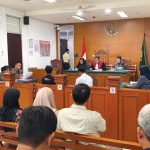Jakarta (Greeners) – Birds are the most species to be included in the latest list of protected plants and animals of Ministry of Environment and Forestry. At least 562 birds or 31.73 percent out of 1,771 birds in Indonesia are now protected. Previously, only 437 birds were protected. In addition, 27 species out of 28 birds are critically endangered, based on IUCN Red List also included in the list, of which only accommodated 64 percent of the total endangered birds.
READ ALSO: All Parrots are Official Protected in Indonesia
Jihad, Mainstreaming Biodiversity Officer of Burung Indonesia, said the latest regulation is the actual condition of Indonesia’s plants and animals, which are continue to decline in wildlife because of threats, population, and also accommodates new endemic species.
“The regulation includes types of birds which are experiencing a rapid decline in wildlife, such as leafbird (Chloropseidae), Javan white-eye (Zosterops flavus), and yellow-spectacled white-eye (Heleia wallacei) because of trading. Previously, most of species did not reflect the latest development from the population, threats and science point of views,” he said in Jakarta, on Tuesday (14/8/2018).
Besides rapid declining, species with small population and endemic are now included in the criteria of the list. Morotai pittaa (Pitta morotaiensis), black-chinned monarch (Symposiachrus boanensis), and other new species originating from the process of separation from other species with smaller distribution areas.
“In addition, there are birds not protected and still not protected, such as cattle egret (Bubulcus ibis). This species has larger distribution areas and larger population so it does not meet requirements as protected species,” he said.
READ ALSO: Ministry of Environment and Forestry Foiled Illegal Trade of 2,000 Birds in Jambi
Furthermore, he said there are ways to increase population, such as through research, restocking, population enrichment by ex-situ, habitat protection, and law enforcement against illegal traders.
Previously, director general of conservation and natural resources and ecosystem, Wiratno, said that there is no need to be concern about the new regulation, because its aim is to preserve animals and plants.
The use of plants and animals in Indonesia has been regulated in a government regulation issued in 1999 which stipulate the mechanism, including breeding.
Reports by Dewi Purningsih



















































